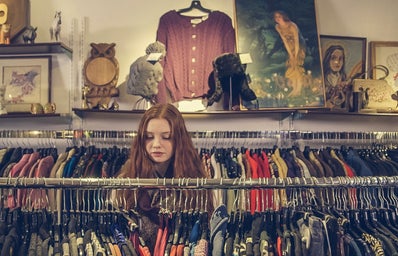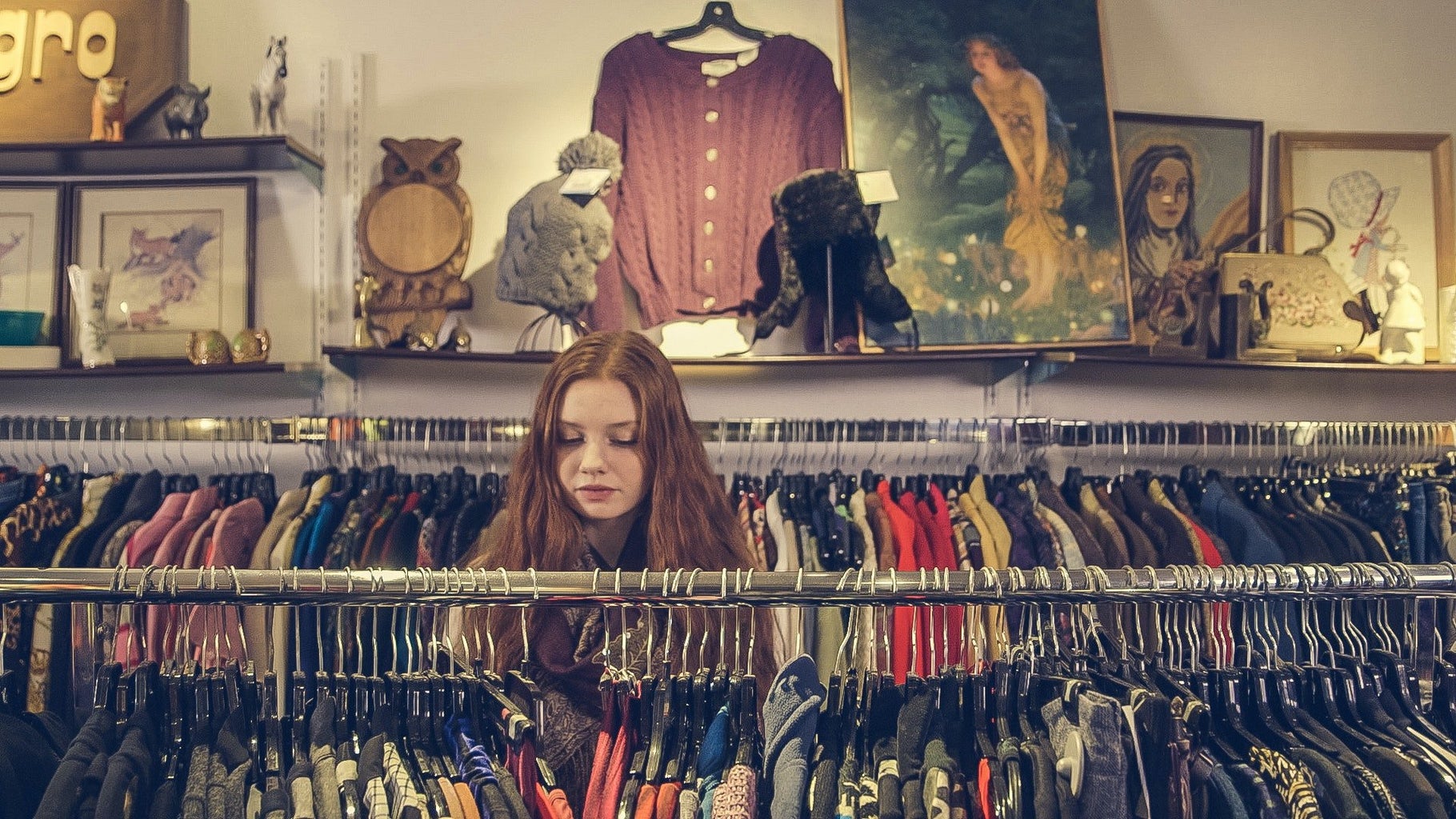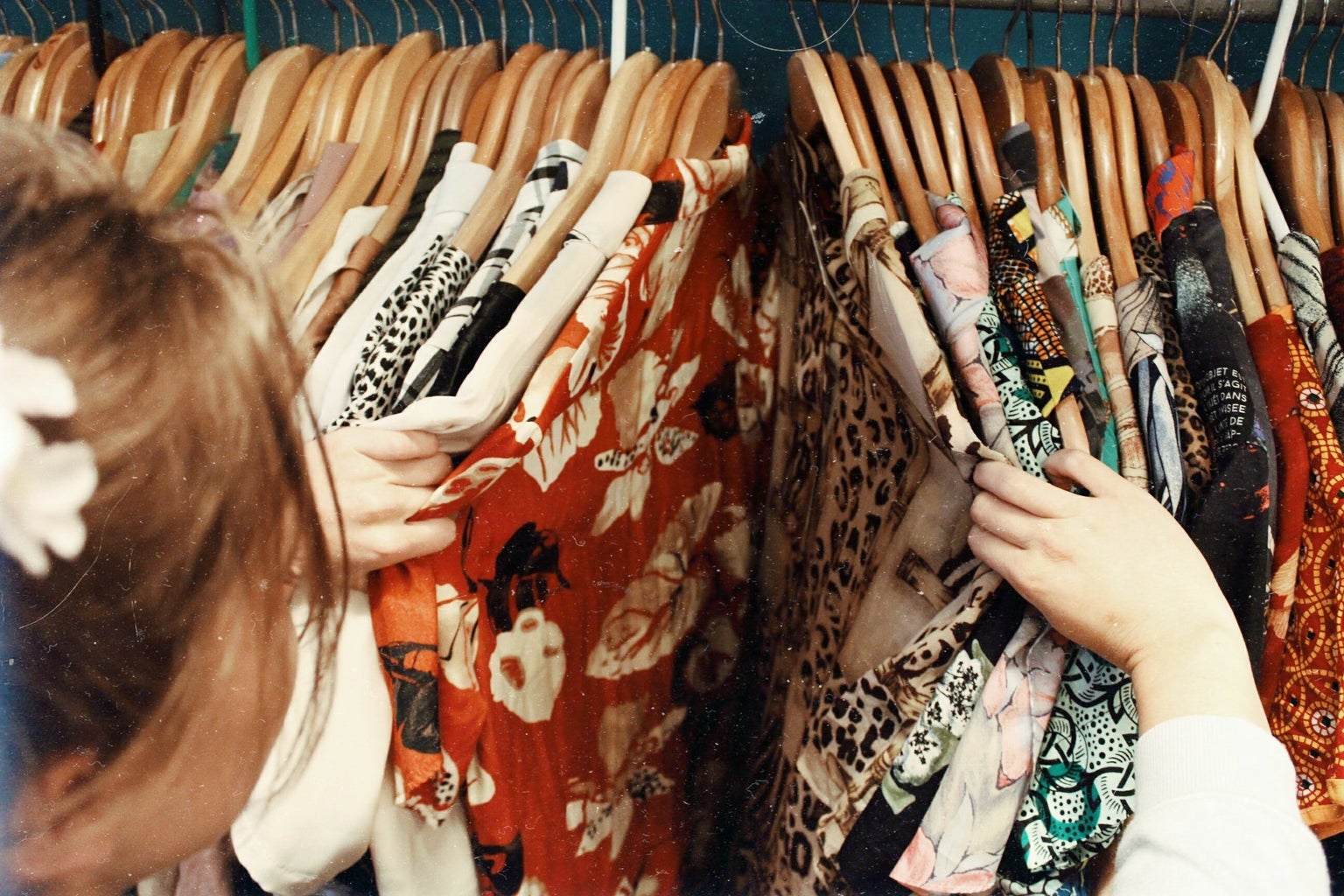After being in college for a little over a year, I’ve noticed my thrifting affliction becoming more immense than ever before. Don’t get me wrong, I’ve always enjoyed thrifting with friends back in my hometown, but I see myself now thrifting or going out of my way to find some good deals everywhere. I get so excited over the little things, and when people ask me why, I think I’ve now come to the conclusion.
For CONText, what is thrifting?
Before diving in, I would like to give some historical context to how thrifting has come to be in the US today. I’ve always thought the idea of thrifting, upcycling, and hand-me-down clothing was normal being raised in a low-income household, and even thought in some ways it was creative, fun, and cool—but in society it not always once was. Around the 1950s, thrifting carried the stigma associated with poverty and low status, often looked down upon as a necessity over a luxury. Over the decades, however, this view of thrifting has shifted, as thrifting is now known for embracing sustainability and a symbol of vintage fashion. In 2012, August 27, hit pop song “Thrift Shop” by Macklemore and Ryan Lewis was released, which impacted the popularity of shopping at thrift stores by celebrating their unique finds, topping the charts in 2013. Cultural trends and shifts like this happen in every generation, as it is not unusual for old trends to make a comeback after a decade or two, so why is it important now?
The Controversy of accessibility
Well, since thrifting has become so popularized today, especially by younger folks, it may be detrimental in the long run, when it normalizes something that may take away from people who need it. Gen Z’s embrace of sustainable fashion and giving new life to secondhand items has stemmed into the controversial topic of overconsumption and commercialization in thrift stores. Many people argue that this trend can lead to increasing prices and reduce accessibility for those who rely on thrift stores for affordable clothing. Hence, the “aesthetic” associated with thrifting might overshadow the ethics of its original purpose, resulting in a practice meant for necessity into a glorified fashion statement. In my personal opinion, I think it’s important for people who thrift frequently to approach it mindfully, and be aware of those in need of an accessible space. I also think thrift lovers can actively participate in the culture of donating to support local charities, making thrifting more inclusive and beneficial for all.
The Cultural approach to thrift shopping
In other cultures, thrifting and bargaining are integral to the shopping culture. For instance, countries like Vietnam feature such a variety of secondhand goods like clothing or household items that haggling is found as a common practice. Sellers often value negotiation and actually respect it, engaging in friendly bargaining to reach a price that compromises fairly among both parties. Contrast to the United States, online platforms like Depop, Mecari, or Facebook Marketplace allow for negotiation, but even then there is a lack of communal atmosphere in a virtual setting opposed to markets in Vietnam. Occasionally, you may find in Chico, California, there are lively night markets that highlight small business vendors who offer a safe space to bargain in a community. But overall, the U.S. tends to focus on more direct purchases and individual finds. More people in the United States do their shopping at corporate stores like TJ Maxx or Ross operate on a discount model rather than the traditional haggling, emphasizing brand-name items with low costs.
My Take on thrifting
For me, I’d like to think of myself as a forager, someone that goes from place to place for things that could be useful for them. Foragers also often engage with other fellow foragers who can share their knowledge on where to look, forming a community. I like using this word because it also has the connotation of being out in the wild and in nature. With this, it indicates that it’s a natural human instinct to forage, and that’s why there’s nothing like the thrill of the hunt. Not only does the unpredictability of thrifting let you go hours and hours in a thrift store—looking through all the aisles, touching every item—but there’s an X factor of finding something one of a kind. If I leave the thrift without purchasing that one pair of vintage denim shorts, there’s a 99% chance I’ll never be able to find the same shorts for the same price ever again (based on true events, and will forever regret not buying them for 6 bucks). Unless the items are discontinued off of the market, people who don’t thrift (non-foragers) can buy the same product once it runs out. That’s what makes thrifting so different from anything else, it’s the mindset of discovering the new uses of things you’ve never thought would have impacted your daily life before.
The sense of impermanence and the art of letting go
Above all else, there’s something about thrifting that makes one feel helpful, and I don’t mean this in a sustainable upcycle way, I mean in the moral way you may feel when you are helping these clothes and items have another chance of life; to be in your home or in your closet to be used like it once did again. I find this feeling usually when I attend estate sales, it reminds me of the impermanence that nothing stays forever; and it’ll be moved on to the next stage of its life before you know it. So enjoy the time you have with it now before it’s too late, since you never know when it’s the last time you’ll be using or wearing it. Some people claim that people who thrift constantly are in a spoiled cycle of never having enough and always looking for what’s next, a harsh symptom of shopaholicism (shopping addiction) or retail therapy. But I (and many others) see thrift shopping as both a practical choice and a way to find unique items. Thrifting and bargaining can also be viewed as a sustainable option, and hopefully will allow growth into global trends towards eco-friendly consumerism. Overall, in order for the art of bargaining and thrifting to work, it has to come from the art of letting go. In life, one has to give and take in order to open the opportunities to create something new.






